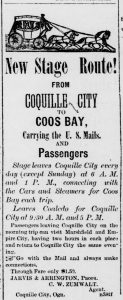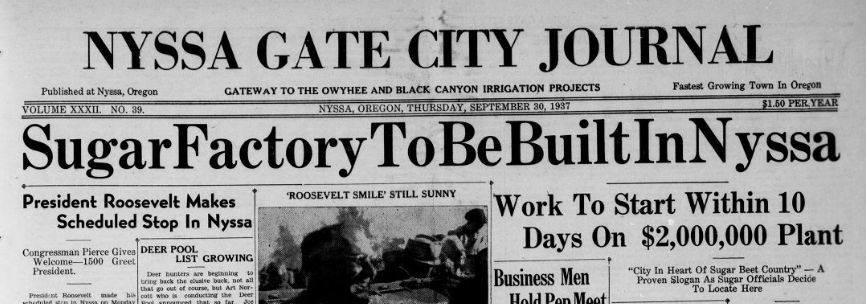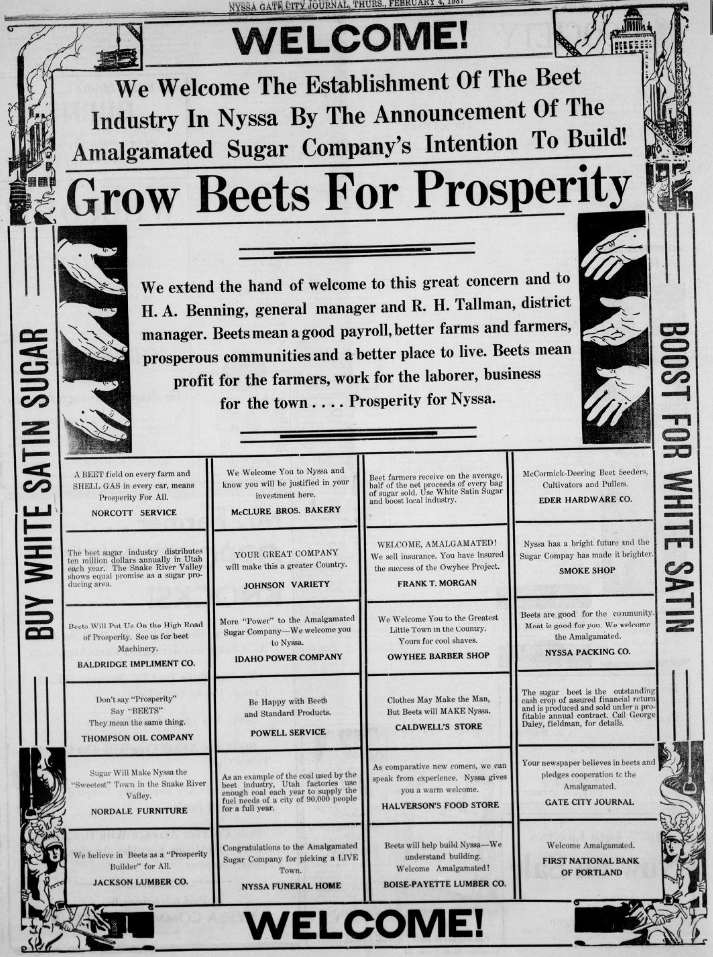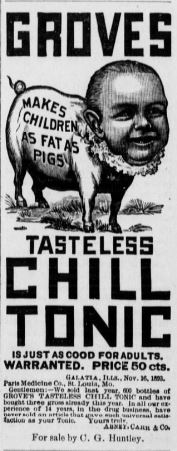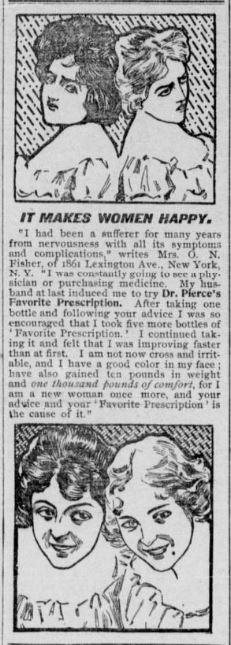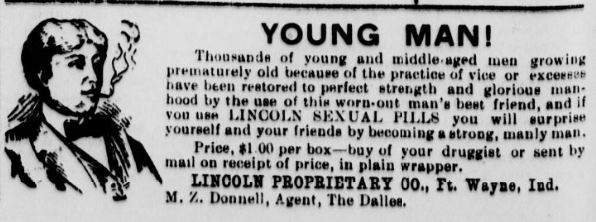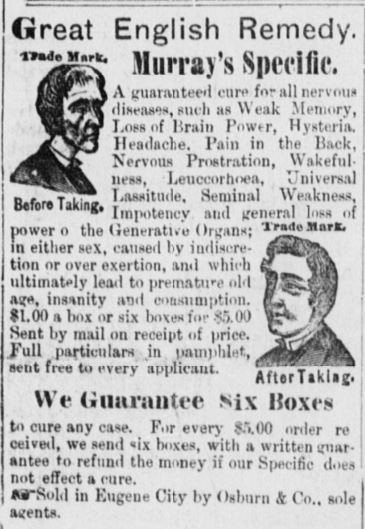
Heppner Weekly Gazette (Heppner, OR.) December 13, 1883, image 1. http://oregonnews.uoregon.edu/lccn/sn97071041/1883-12-13/ed-1/seq-1/
Available at the University of Oregon Special Collections and University Archives (SCUA) is a collection of correspondences, scrapbooks, newspapers, and miscellaneous papers pertaining to Colonel John “Watermelon” Redington (1851-1935). An Oregon scout turned newspaper man, this eccentric character was editor of the Heppner Weekly Gazette in Heppner, Oregon during its frontier days. The Colonel published quite an unusual periodical for such a small western town, and University of Oregon alumnus Brant Ducey used Redington’s editorial career with the Heppner Weekly Gazette as the focus of his master’s thesis (John Watermelon Redington: “Hell on Hogthieves and Hypocrites” 1963). To add to the bulk of resources available on John “Watermelon” Redington, the Oregon Digital Newspaper Program (ODNP) has also made digital issues of the Heppner Weekly Gazette available online from the period of his editorial management. Drawing upon the research already completed by Brant Ducey, and the resources made available by SCUA and ODNP, this post takes a quick look at the editorial career of Redington, which Ducey remarked as perhaps one of the most unique moments in the history of Oregon’s periodical publications.
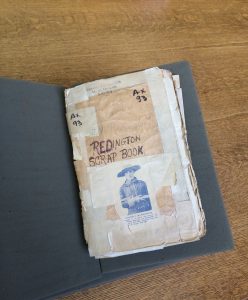
Scrapbook in the John W. Redington Papers, 1880-1935. University of Oregon Libraries, Special Collections and University Archives. Jane Conway photo.
As Brant Ducey explains in his research, Colonel Redington was propositioned with an offer to run the Heppner Weekly Gazette following his service in both the Nez Perce and Bannock Indian wars. He was hesitant to accept the job, as an editorial position didn’t quite match the excitement of his nomadic life as an Oregon scout. After hearing that the previous publisher of the paper had been run out of Heppner by the town “baddies,” Redington felt that the proposition might provide enough of a challenge to stay entertained.
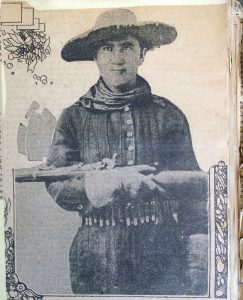
“The Original Boy Scout.” John. W. Redington Papers, 1880-1935. University of Oregon Libraries, Special Collections and University Archives. Jane Conway photo.
In the 1880’s, the city of Heppner, Oregon was much like the majority of early frontier towns scattered throughout the west: chaotic. Redington embraced the challenges accompanying his role as editor and sought to establish a paper that prioritized the best interests of the fledgling town, despite the often raucous environment he was surrounded by. Tensions between law-abiding citizens, gamblers, saloon-keepers, and horse thieves ran high, with each constituency having their own ideas as to what the political position of the paper should be. The small, but vibrant town of Heppner was anxious to see what their new editor was made of, and Redington did not disappoint. In his introductory address, the Colonel made clear the position of the Heppner Weekly Gazette:
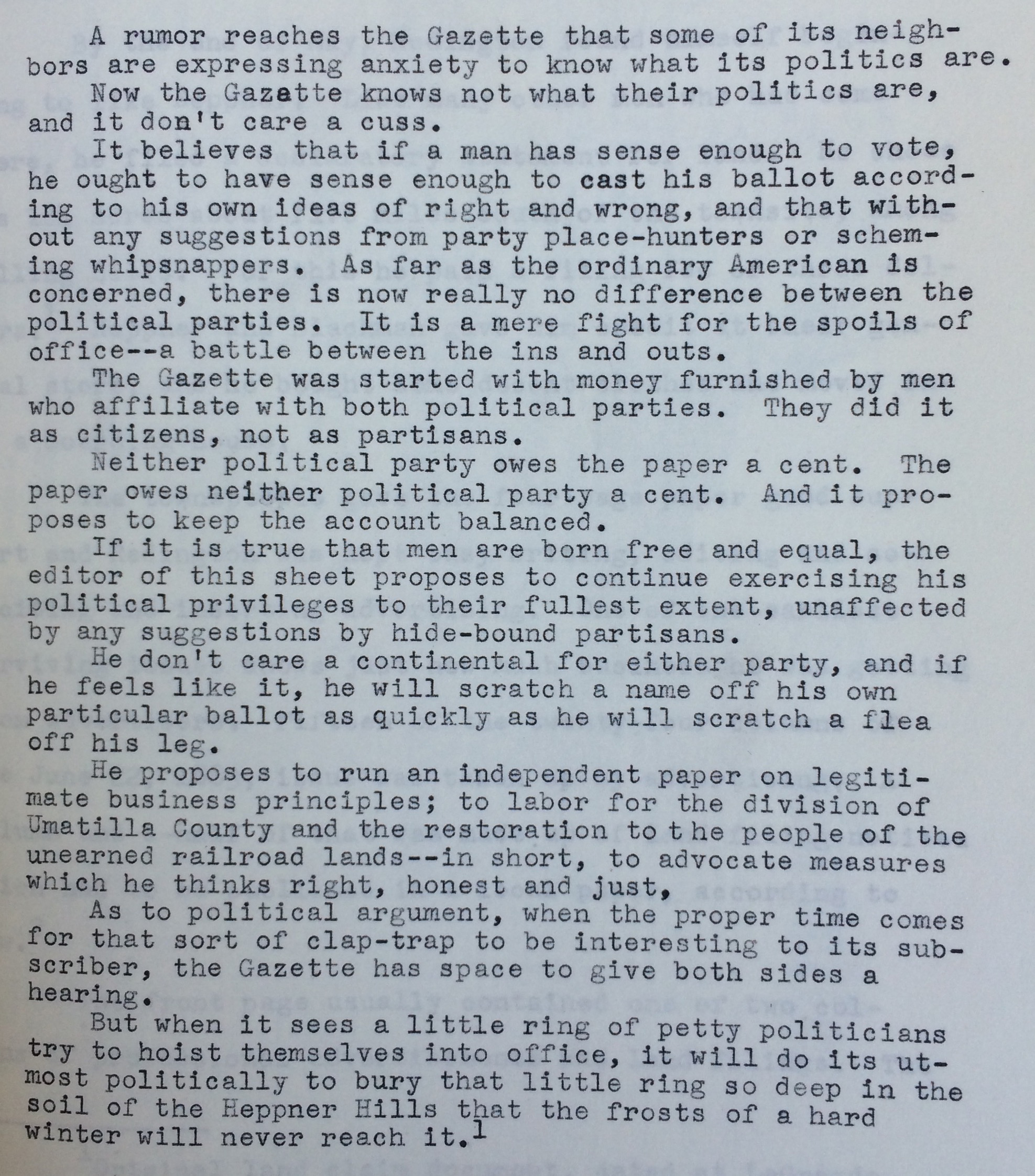
Undated clipping from the Heppner Weekly Gazette in one of the John W. Redington scrapbooks. John W. Redington Papers, 1880-1935. University of Oregon Libraries, Special Collections and University Archives. Jane Conway photo.
The hardy and strong-willed homesteaders, which composed the Gazette’s readership, resonated with their new editor’s straightforward approach to journalism, and the publication quickly garnered support. But the paper’s eventual infamy and nationwide readership cannot be solely credited to Redington’s blunt tone of authorship. A dry sense of humor, which he let infiltrate all aspects of his paper, proved to be the defining source of the periodicals success.
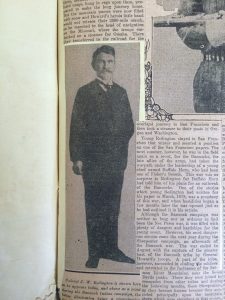
Image of John W. Redington in the John W. Redington Papers, 1880-1935. University of Oregon Libraries, Special Collections and University Archives. Jane Conway Photo.
The Colonel knew that homesteading was a grueling task that left little time for reading newspapers. The comedic tone he chose to adopt for the Heppner Gazette gave the news a readable quality to worn out pioneers and a popularity unusual for periodicals of its time. The Colonel was a natural comedian and found a special talent in giving the routine or mundane a comedic spin:

Heppner Weekly Gazette (Heppner, OR.) June 22, 1883, image 2. http://oregonnews.uoregon.edu/lccn/sn97071041/1883-06-22/ed-1/seq-2/
More often than not left without much news to tell, Redington also wrote comedic shorts to fill his columns:
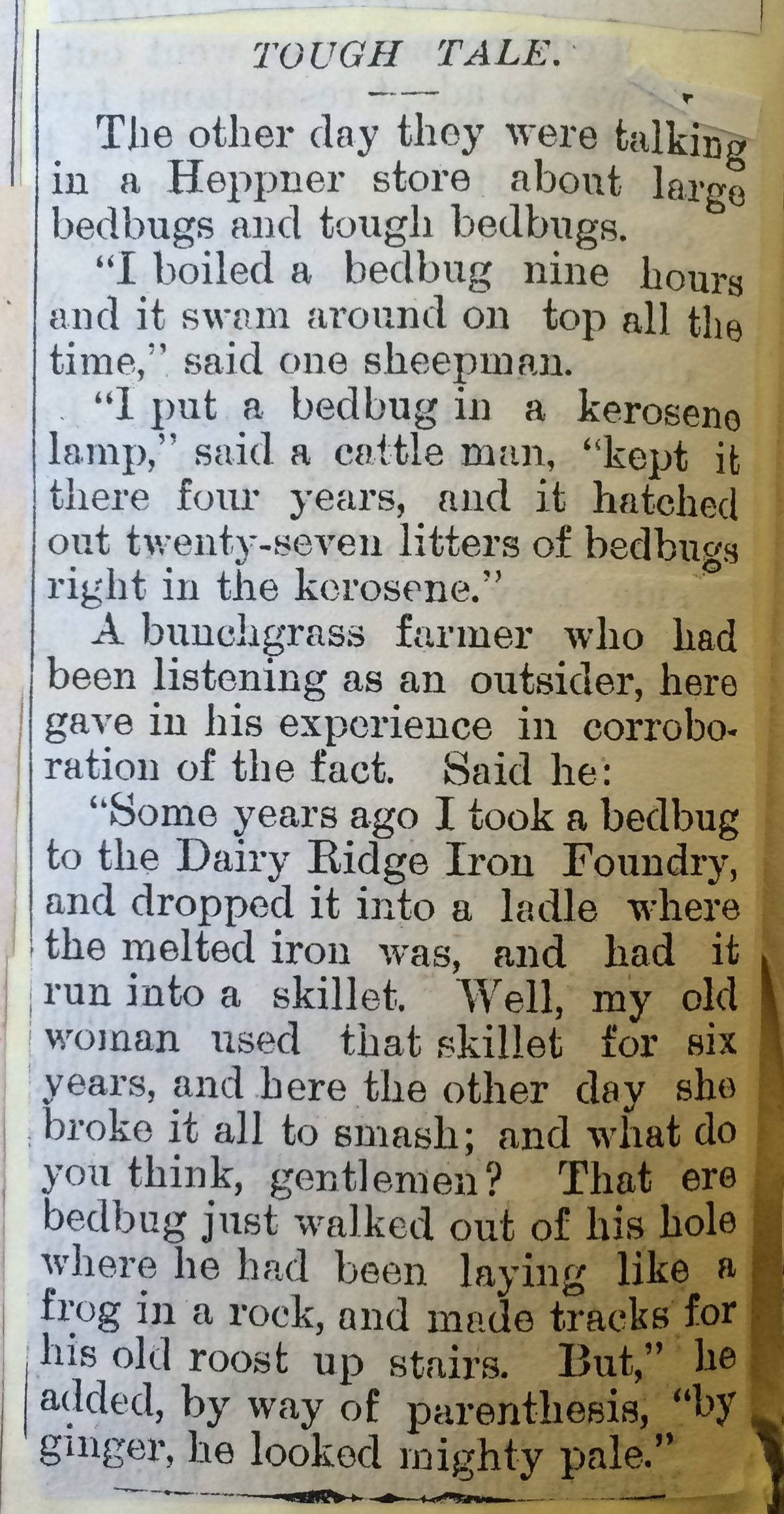
Heppner Weekly Gazette (Heppner, OR.) John W. Redington Papers, 1880-1935. University of Oregon Libraries, Special Collections and University Archives. Jane Conway Photo.
The Heppner Weekly Gazette and its “comedic journalism” achieved a moderate amount of fame, and Redington’s office was often flooded with letters from all across the country. This would have been normal for a newspaper published in Chicago or New York, as during the last quarter of the 19th century papers included a high level of correspondence, but for a town the size of Heppner it was strange indeed! Readers were delighted that as the Colonel published some of the correspondences he received, it only increased the Gazette’s comedic quality:
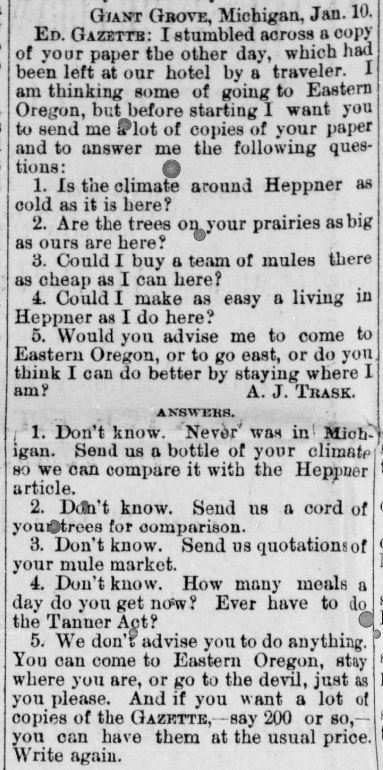
Heppner Weekly Gazette (Heppner, OR.) January 24, 1884, image 3. http://oregonnews.uoregon.edu/lccn/sn97071041/1884-01-24/ed-1/seq-3/

Heppner Weekly Gazette (Heppner, OR.) John W. Redington Papers, 1880-1935. University of Oregon Libraries, Special Collections and University Archives. Jane Conway Photo.

Heppner Weekly Gazette (Heppner, OR.) John W. Redington Papers, 1880-1935. University of Oregon Libraries, Special Collections and University Archives. Jane Conway Photo.
Throughout the rest of Redington’s life, he continued to publish newspapers, but none of them ever achieved the same comedic quality as the Heppner Weekly Gazette. Something about the small town of Heppner inspired the Colonel; perhaps it was the rural isolation or the vivacious assortment of town folk. Only a small sampling of Redington’s humor has been able to be featured in this blog post; to read more of his entertaining anecdotes, check out the digitized issues of the Heppner Weekly Gazette at ODNP.
Written in reference to:
Ducey, Brant. “John W. Redington- Hell on Hogthieves and Hypocrites,” MA Thesis. University of Oregon, 1963.
Stewart Redington, Elizabeth. “Col. John Watermelon Redington, my Papa.” The Pacific Northwest Forum, vol. 5, no.1, 1979, pp. 12-22.



